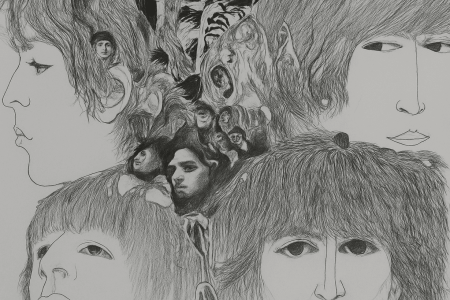When Revolver was released in 1966, it marked a turning point not only for The Beatles but also for popular music as a whole. The album showed the band stepping away from their pop roots and moving toward something more experimental and adventurous. While many fans know it as a masterpiece, there are plenty of lesser-known details hidden behind its creation. Here are ten interesting facts about Revolver that you may not have heard before.
1. John Lennon’s “Yellow Submarine” Began as a Dark Folk Song
Before it became a joyful children’s anthem sung by Ringo Starr, “Yellow Submarine” started out in a very different form. John Lennon first wrote it as a slow, somber folk tune with melancholic lyrics. It was only later that Paul McCartney helped reshape the song into its upbeat and playful version. This shift shows how The Beatles often transformed rough ideas into something entirely new.
2. The Album Title Came From Vinyl Records
The name Revolver has nothing to do with guns. Instead, it refers to how a vinyl record revolves on a turntable. The band wanted a title that was simple yet clever, and this one captured the essence of music itself.
3. George Harrison Made His Breakthrough as a Songwriter
Harrison contributed three songs to the album, including “Taxman,” which opened the record. This was his most significant songwriting presence on a Beatles album up to that point, and it proved that his voice was just as important as Lennon’s or McCartney’s.
4. “Tomorrow Never Knows” Was Years Ahead of Its Time
The closing track is built on a single chord and uses tape loops, reversed sounds, and a hypnotic drum pattern. Many listeners at the time found it baffling, but today it is considered a landmark in psychedelic and electronic music.
5. The Recording Sessions Changed Studio Practices Forever
The Beatles and producer George Martin experimented with new methods such as close-miking instruments, playing tapes backward, and using the studio itself as an instrument. These innovations influenced how music would be recorded for decades.
6. The Cover Art Was Designed by Klaus Voormann
The striking black-and-white collage on the cover was created by Klaus Voormann, a German artist and friend of the band from their Hamburg days. His artwork perfectly captured the mixture of old and new that defined Revolver.
7. “Eleanor Rigby” Broke Pop Conventions
Instead of guitars and drums, “Eleanor Rigby” used a string octet arranged by George Martin. This bold choice gave the song a dramatic feel that was unusual for pop music at the time. It also proved that The Beatles were not afraid to move beyond rock instruments.
8. The Band Drew Inspiration From Eastern Sounds
George Harrison’s interest in Indian music deepened during this period. His song “Love You To” used sitar and tabla, bringing classical Indian influences into Western pop and opening the door for future cross-cultural experiments.
9. The Album Faced Mixed Reactions at First
Although critics in Britain were quick to praise Revolver, American reviewers were initially less enthusiastic. Some found the experimental sounds difficult to understand. Over time, however, the album’s reputation grew until it became recognized as one of the greatest records ever made.
10. It Marked the End of The Beatles as a Touring Band
Shortly after releasing Revolver, The Beatles stopped touring. The complex sounds of the record were nearly impossible to reproduce on stage with the technology of the time. This decision freed them to push further into the studio and create even more ambitious works.
